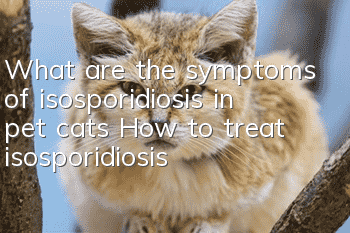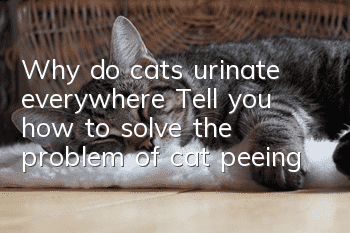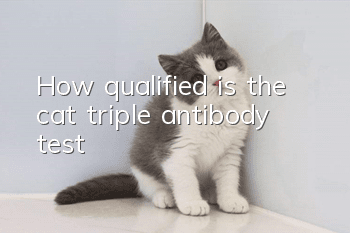What are the symptoms of isosporidiosis in pet cats? How to treat isosporidiosis

What is the cause of feline coccidiosis
A parasitic disease caused by Isospora coccidia parasitizing the intestines of cats and dogs is called Isospora coccidiosis. The main clinical manifestations of this disease are enteritis-type symptoms. Since the disease is contagious to a certain extent, if a sick cat is found, it should be isolated and treated in time.
The cause of this disease is Isospora coccidia, which is characterized by the embryospores in the oocysts forming two sporangia, each containing 4 sporozoites. This genus of coccidia usually lives in the epithelial cells of the small intestinal mucosa of dogs, cats, humans and other carnivorous animals. Animals swallow infectious oocysts when eating or drinking water. The oocysts are affected by duodenal juice and pancreatic juice in the duodenum. The sporozoites escape from the cyst and become round trophozoites. The nucleus of the trophozoite undergoes schizont multiplication to form a schizont.
After several generations of asexual schizont proliferation, sexual gamete reproduction occurs, forming large and small gametes. The large and small gametes enter the human intestine, where they combine and develop into an oocyst with a double membrane. The oocysts are excreted in the feces. The oocysts undergo spore proliferation in a suitable external environment to form spore cells, which then divide into sporozoites. This process ends in 3 to 4 days and nights, and under adverse conditions, the time for sporozoites to form in the oocysts will be prolonged.
Oocysts are highly resistant to disinfectants but die quickly in dry air within a few days. The route of infection is the digestive tract, and the disease can occur by ingesting contaminated food, drinking water, or ingesting flies and rodents carrying coccidioidal oocysts.
What are the symptoms of isosporal coccidiosis
There are many infected targets of isosporal coccidiosis, and humans can also be infected by this parasite. The source of infection is usually domestic cats or dogs, so we must try to reduce contact with sick cats and keep them Isolation treatment.
The symptoms of this disease are more severe in kittens. The main clinical manifestations are diarrhea, thin stools, mixed with mucus, and sometimes blood. Sick cats will become emaciated, have dull coats, stop growing, and eventually die from exhaustion. Adult cats have stronger resistance and often develop chronically.
To determine the disease, the oocysts in the feces can be examined using the saturated salt water flotation method, and a comprehensive diagnosis can be made based on the characteristics, shape, and quantity of the oocysts, as well as the clinical characteristics and epidemiological data of the sick cat.
How to treat feline coccidiosis
This disease is not only contagious to a certain extent but also fatal. If the sick dog or cat is not treated in time, it will lead to the death of the cat. Therefore, it is crucial to detect the disease in time and treat it accordingly.
The first choice for the treatment of this disease is amprolium. The dose is 200mg/kg body weight, mixed with food and fed continuously for 7 to 12 days.. Long-term use of this drug is prone to side effects such as vomiting, anorexia, diarrhea and neurological symptoms. If such side effects occur, the medication should be stopped and thiamine, glucose and rehydration fluid should be given to help the cat return to normal. Furans and sulfonamides, such as Bayer's cyclosporine, can also be used to quickly reach effective concentrations in the blood.
A large dose should be used for the first administration, and the maintenance dose should be 1/2. The first dose of sulfadiazine is 0.14-0.2g/kg body weight, taken orally or intravenously, and then 0.11g/kg body weight every 12 hours. In addition, symptomatic treatment should be provided, nutrition should be strengthened, and the body's disease resistance can be increased.
- What should I do if a male leopard cat doesn’t want to mate with a female cat?
- Can cat tear stains be removed?
- Can cats eat roast duck?
- Are tabby Siamese cats a hybrid?
- Treatment methods and postoperative care for corneal ulcers in cats
- Kittens like to step on my face? What does it mean when a cat keeps stepping on my face?
- How to judge a cat’s stress response?
- Does a female blue cat have gills?
- What should Shandong lion cats eat? Don’t feed cats too casually
- What happens if a cat is depressed?



